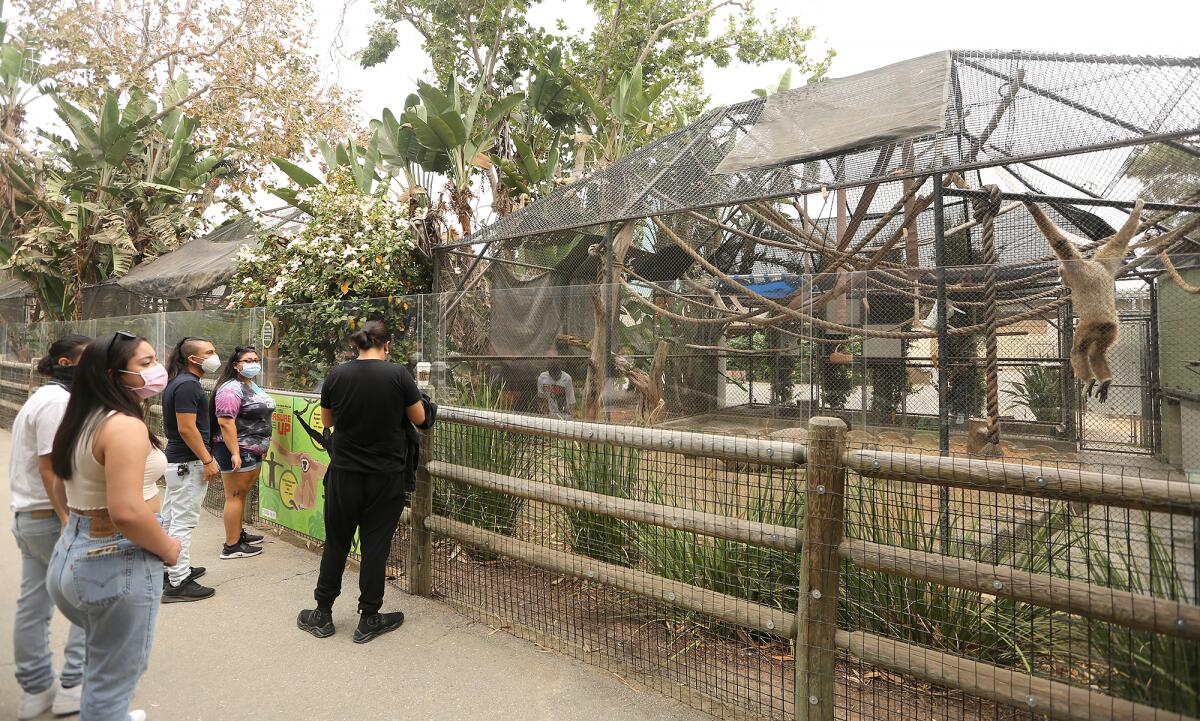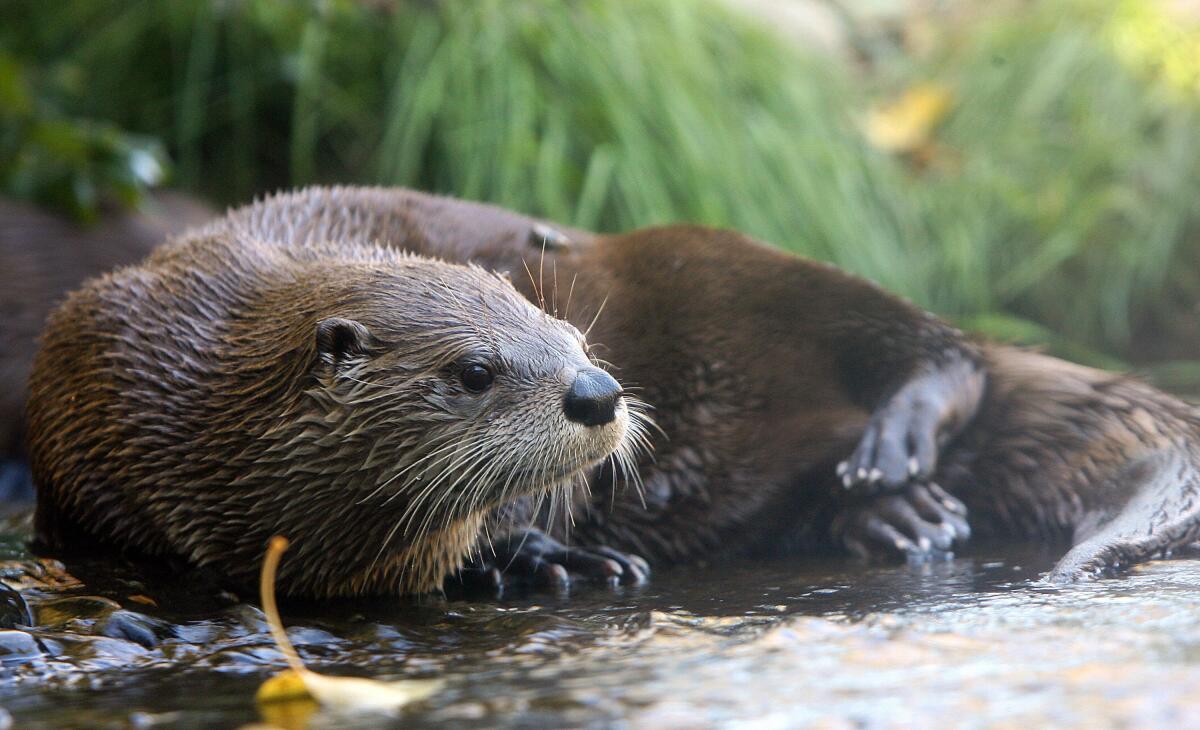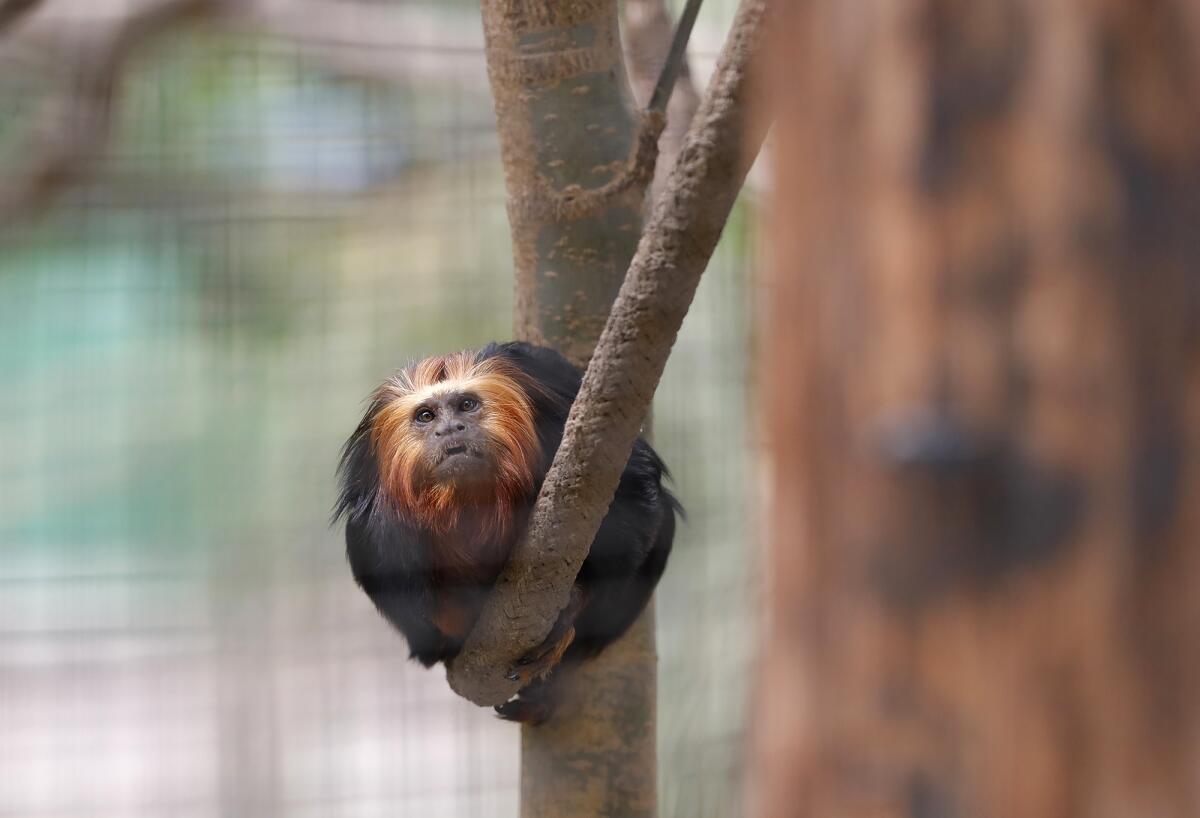Giant river otters to get new home at Santa Ana Zoo

Life has been unfair to the giant river otter.
Although it holds the title of being the world’s longest weasel, it’s classified as endangered.
Luckily for a few of the creatures, the Santa Ana Zoo recently broke ground on a new $6.6-million river otter habitat that will also feature an elevated trail system for primates to travel overhead.

The project is considered to be the most complex in the zoo’s history and has been in the design phase for a few years, said zoo manager Ethan Fisher.
It is being funded by $6 million from the city’s Parks, Recreation and Community Services Agency and $600,000 in grants and donations from the zoo’s nonprofit partner, Friends of the Santa Ana Zoo.
Expected to open in summer 2023, the exhibit includes an underwater viewing area — another first for the zoo. Fisher said an extensive life support system is also needed to maintain the exhibit’s water quality.

The monkeys will be able to walk through an elevated trail system above the river otters but will not interact with the creatures. Other animals cannot be paired with the territorial river otters, which have been known to eat anacondas and caiman.
“We’ve had some animal habitats, like our bird aviary that has a very nice stream system in it,” Fisher described the other water features in the zoo. “Then we had the area where this project is happening, but the previous setup was more of a lagoon or moat. But it wasn’t like this, where you have a glass viewing panel and you can see the animals underwater.”
The project is the first phase of the zoo’s master plan for the next two decades.
One of the major highlights of the master plan is an expansion of what has been known as “Monkey Row” into the “Primate Forest.” The monkey habitats will be enlarged, guests will be able to see the monkeys at eye-level on elevated walkways and there will be a garden trail.
Fisher said he hopes the latter project will be tackled within the next couple years.
The goat trails at the zoo will also be modified so guests can interact with the animals more freely. Fisher said the zoo will construct a new education building, and an educational butterfly experience is anticipated in the spring.
Fisher said the zoo has drawn more visitors since outdoor activities became more popular due to the pandemic.
“The zoo has been a great place for a lot of families to come as they’ve looked for outdoor recreation opportunities in Southern California,” he said. “... I think people have definitely embraced outdoor opportunities a little bit more and have been seeking them out. Then we’ve also been trying to connect with the Santa Ana community a little bit more. We’ve been doing some programs in Santa Ana parks, where the zoo brings some animals out and we do activities.”
All the latest on Orange County from Orange County.
Get our free TimesOC newsletter.
You may occasionally receive promotional content from the Daily Pilot.




